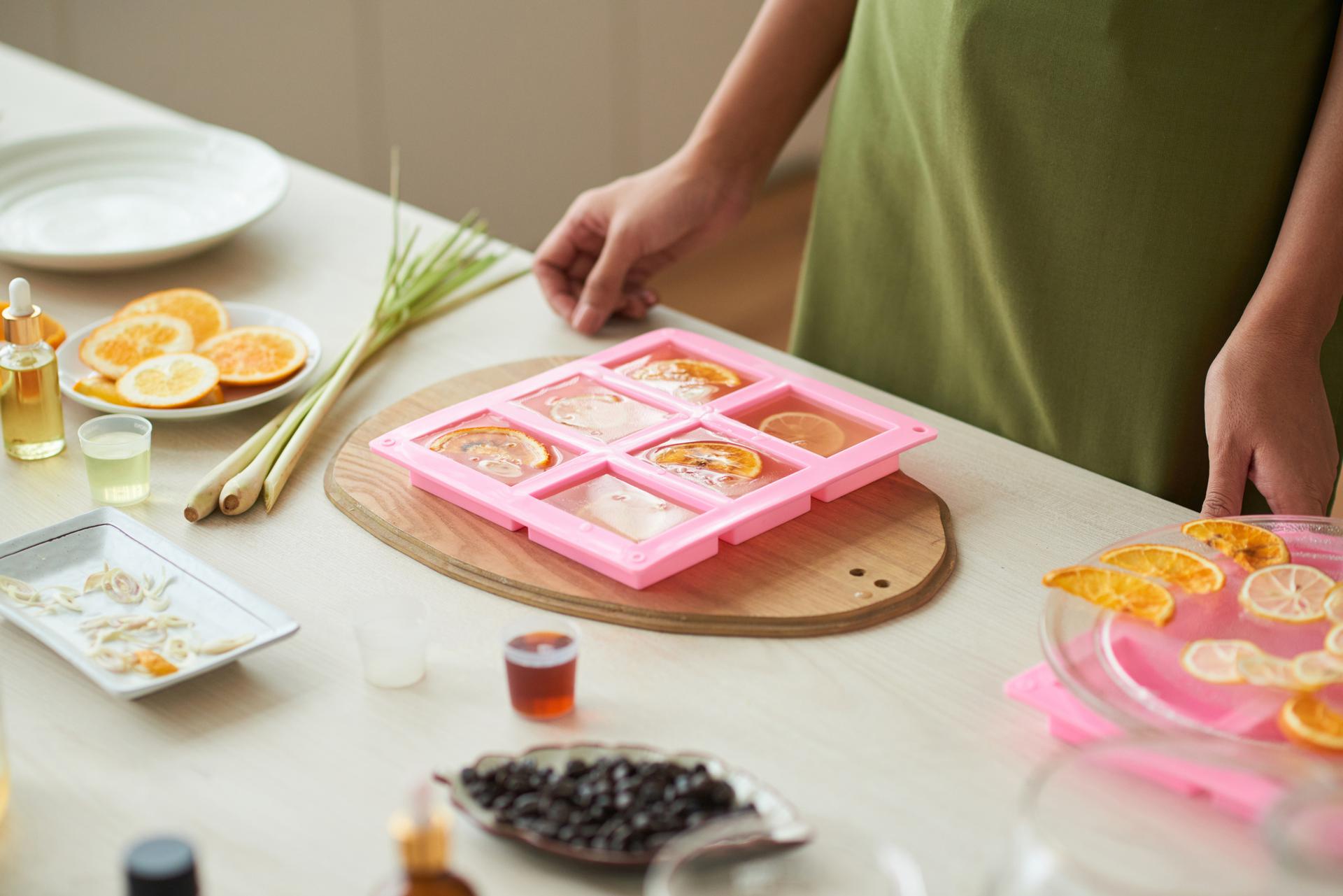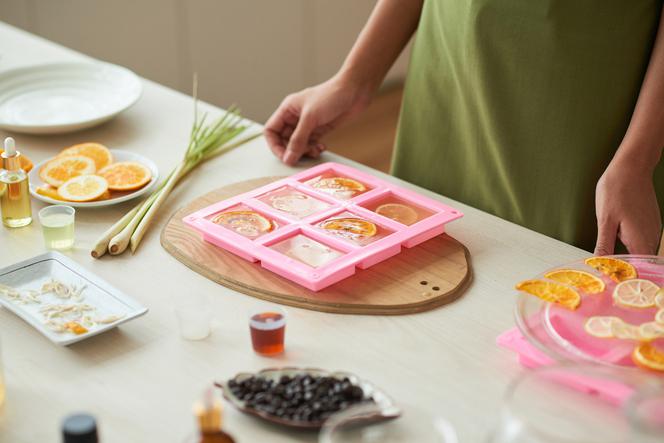
The fashion for ecological products has made us more and more willing to prepare our own cosmetics in the comfort of our own home. A bit of good intentions and knowledge about the needs of our skin should ensure that we get the perfect preparation, but this is not always the case. Homemade cosmetics may pose a significant threat to health or negatively affect the condition of the skin. Why? Find out the 5 biggest disadvantages of home-made cosmetics!

Contents
More and more women notice that creams, lotions and balms from typical drugstores promise a lot in colorful advertisements, but they do not fully match the effects visible in practice. Tempted by attractive packaging, women try dozens of preparations over the next few years that do not fully meet their needs. A colorful cover and advertising with a famous celebrity often comes with a high price.
More conscious consumers, after reading the chemical composition, may be discouraged from buying due to the huge amount of chemical additives, artificial colors and preservatives present in most commercial products.
Especially people with skin prone to allergies and irritations start to avoid cosmetics with too aggressive or extensive ingredients. The solution to these doubts seems to be composing your favorite preparations yourself according to your personal preferences, taste and skin preferences, which we learn throughout our lives. In practice, however, it turns out that the problem is slightly more complex.
Is it worth buying semi-finished products in online stores?
Online drugstores and chemical wholesalers currently offer hundreds of raw materials for hand-made creation of not only typical care cosmetics, but also the so-called “colors”, i.e. coloring foundations, eye shadows or lipsticks.
A wide selection of variants of individual ingredients and a dizzying number of shades of pigments mean that it is online that we purchase most of the products for creating our own cosmetics, which are not available in a regular store.
Seemingly simple recipes for an exotically scented, ecological balm or a rejuvenating mask often included in the packaging also encourage experimenting. It’s also easy to find blogs with “chemical” advice.
The final criterion that convinces most customers is the several or even several times lower price of the ingredients. We do not pay for fancy packaging, distribution, store service, professional clothing and advertising.
Even after combining several raw materials, it turns out that our dream cream will cost only a few zlotys. So where might the threats be?
Disadvantages of home-made cosmetics – lack of research
Guided by the economic profitability of self-made cosmetics, we forget that the price of the product includes not only the cost of its production but also… appropriate research and standards related to its safety.
Performing analyzes in a certified laboratory (often with an international reputation) sometimes costs thousands of euros. Currently, there is no longer a need to test cosmetics on animals, which involved obvious and unnecessary suffering of living beings. However, modern clinical tests ensure an excellent standard and are based on the opinions of dermatology specialists.
Appropriate production practices (so-called GMP standards) or ISO quality certificates apply to the production plant or even to all units that produce individual ingredients of the preparations present in the product. All this to ensure perfect purity and proportionality of the portioning process, preparation of mixtures and their subsequent packaging.
It is worth adding that the automation of processes in a cosmetics factory (although it may be associated with a lack of finesse) certainly ensures the repeatability of the process. Thanks to this, each individual box of the drug guarantees identical composition and quality.
Unfortunately, the same cannot be said about most cosmetics made at home – which we often make by eye or depending on our mood. Such fluctuations in composition proportions can be a shock to the skin and, when repeated applications of different variants are regularly repeated, cause a recurrence of acne lesions or irritations.
Ingredients purchased online do not guarantee quality or safety and may come from unverified sources. It is enough to point out the reprehensible and still common practice of selling fake perfumes under the logos of well-known producers by some online perfumeries.
Disadvantages of home-made cosmetics – wrong proportions and low effectiveness
Preparing a face cream or body lotion is not just about simply mixing the ingredients. Appropriate recipes that guarantee perfect, smooth consistency and uniformity of mass are created in chemical laboratories, sometimes for years.
It is also crucial to select the proportions so that as many active substances as possible can penetrate the epidermal barrier. Only in this way the deeper layers of the skin will receive the necessary dose of hydration, vitamins or plant extracts.
Scientists are developing dozens of advanced technologies for this purpose. Among the most famous, it is worth mentioning formulas based on the structure of micelles or nanoparticles. They are often covered by a patent and strictly guarded against competitors (also formally, through non-competition agreements and agreements obliging scientific staff to keep business secrets).
At home and without specialist chemical knowledge, it is rather difficult to professionally select ingredients. A common problem with home-made products is the rapid separation of phases in the mixture or their inaccurate mixing. This may be due to incorrectly selected proportions of the emulsifier – a compound that facilitates mixing the oil and water phases of the preparations and ensures its durability.
The negative effect of such errors (apart from the unsightly appearance of the cream or body lotion itself) is primarily the loss of the physicochemical properties of our product, the ingredients of which will not be able to “combine their forces” and work as one mixture.
However, what is more dangerous for the skin is the case when inappropriate selection of ingredients means adding “by eye” substances that may cause allergies or skin irritation.
These include, for example, essential oils, which provide a beautiful scent, but can be irritating in excess. The effects of many interactions are difficult to predict and often depend on our individual characteristics. Therefore, without specialist knowledge, it is better to leave the production of complex cosmetics to professionals.
Disadvantages of home-made cosmetics – low durability
Many people who choose simple and ecological ingredients in home-made cosmetics completely give up preservatives. Would any natural food product be able to stand on a shelf for half a year intact, without becoming covered with mold? I don’t think so.
Low durability is often associated with the lack of economics of the entire process. In chemical wholesalers we can buy almost any active ingredient for little money. Most often, however, they are sold in large packages.
If we produce cosmetics solely for our own needs, most likely a large part of the preparations will simply have to be thrown away. Even if we ignore the impact of such waste on the environment, we cannot turn a blind eye to the apparent savings.
The problem is even more urgent because many women, seeing the opportunity to create cosmetics themselves, succumb to the magic of the manufacturer’s rich offer. As a result, he buys and drinks many different substances, but does not use any of them to the end. The result of such action is easy to predict!
Disadvantages of home-made cosmetics – risk of infection
Not using preservatives in the product is a mistake that can also seriously threaten our health! Contrary to appearances, preservatives are not responsible for allergies and inflammatory reactions occurring after using cosmetics, but are an essential ingredient enabling safe storage of preparations in room conditions.
The water contained in most popular creams and tonics is a perfect environment for the multiplication of bacteria, molds and fungi. A warm, humid bathroom, a place where 80% of people store cosmetics or their semi-finished products, is an ideal incubator for the development of microorganisms in open packaging.
Their multiplication can not only change the color, smell or consistency of our cosmetic. The greatest threat is the release of harmful metabolites by molds and bacteria, which, when in contact with the skin, may cause:
- redness,
- acne,
- local infections,
- allergies.
Cosmetics typically based on oils or waxes (e.g. body oils, massage oils or lip butters)…
